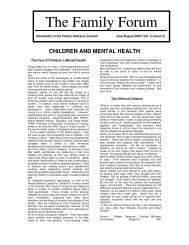Winter 2010 - St. Joseph's Health Care London
Winter 2010 - St. Joseph's Health Care London
Winter 2010 - St. Joseph's Health Care London
You also want an ePaper? Increase the reach of your titles
YUMPU automatically turns print PDFs into web optimized ePapers that Google loves.
MISS INFORMATION<br />
The facts behind<br />
common misconceptions<br />
about mammography<br />
You stare at your calendar, uncomfortable with the thought of<br />
what lies ahead. Perhaps it’s your fi rst mammogram, or you are<br />
a seasoned test taker. No matter. The same troubling concerns<br />
can weigh heavily on your mind.<br />
“It’s really a small price to pay for such an important test,” says Cathy<br />
Ammendolea, president of the Canadian Breast Cancer Network and a cancer<br />
survivor. “The bottom line is that mammograms help save lives. There isn’t<br />
much more to say than that.”<br />
These days, taking what amounts to an X-ray of the breasts has improved<br />
dramatically since mammograms arrived on the medical scene in the late<br />
1960s. Faster, less painful exams under the care of better skilled medical<br />
professionals have improved the experience. Women also have become more<br />
informed about mammography.<br />
The latest fi gures from the Public <strong>Health</strong> Agency of Canada show that close<br />
to 62 per cent of women between 50 and 69 years of age received a screening<br />
mammogram within the past two years.<br />
Yet there remains some misinformation about these potentially life-saving<br />
exams, Ammendolea says. Things that may make a woman less likely to have<br />
regular mammograms.<br />
BY DAVID SCHWARTZ










